1. Granada
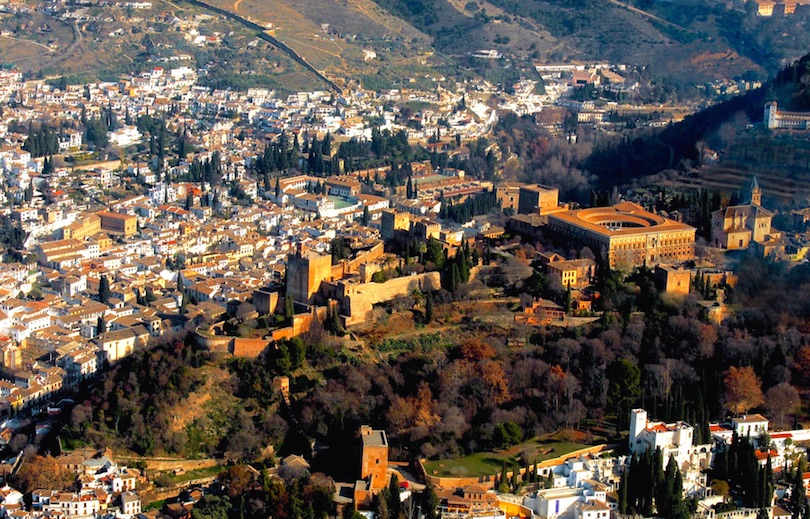
Located at the base of the Sierra Nevada mountains of southern Spain, Granada is the capital of the Granada province. A mid-sized city, Granada offers a perfect blend of spectacular attractions, traditional cultures and an animated nightlife. But most of all it is the home of the Alhambra, a pinnacle of Moorish art that encapsulates Andalusian history and is one of the great architectural sights of Europe.
Attesting to the city’s eventful history are its most notable landmarks, the 16th century Granada Cathedral with its magnificent domed ceiling, and the famous Alhambra, a grand Moorish palace with luxurious gardens and Arab baths.
Granada’s juxtaposing neighborhoods, Sacromonte and Albaicin, are the essence of the city’s culture. Noted for its Christian abbey, Sacromonte is where tourists come to see how gypsies have traditionally lived in various cave dwellings and to watch live dances of flamenco and zambra.
Albaicin, the Arabic Quarter, is the site of a hundred year-old Spice Market. Here among a setting of Moorish architecture, cobblestone streets and vivid bougainvillea, a medley of vendors sell colorful tapestries, wall hangings and exotic teas and spices.
Just outside the city, the Nevada Ski station offers a wide range of activities for all seasons from snow skiing and sledding to mountain climbing, horse riding and cable car rides.
In the evenings, locals roam from one bar to the next, sampling tapas and drinks before immersing themselves in the city’s entertainment choices.
2. Barcelona[
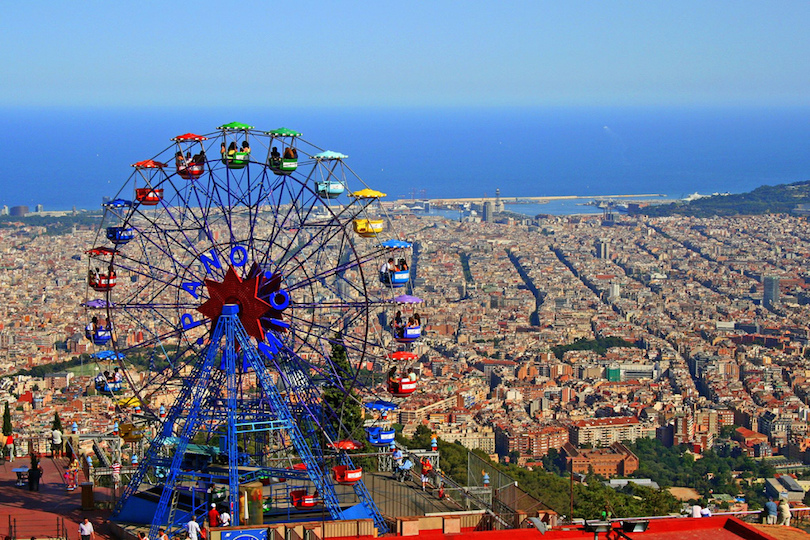
Located in northeastern Spain, Barcelona is one of the country’s top travel destinations because it offers everything tourists look for in a European city from historic architecture to lively shopping, vibrant culture and buzzing nightlife.
Ciutat Vella, the Old City, is Barcelona’s main attraction. Here, tourists will find the Gothic Quarter with its beautiful, old churches, Roman ruins and cobblestone streets lined with outdoor cafes and restaurants.
Surrounded by statues and fountains, La Placa Catalunya is a popular gathering spot and hub for local transportation services. Popular activities in Barcelona include strolling along La Rambla, a tree-lined pedestrian avenue, and sunbath on Barceloneta, one of the city’s most popular beaches.
Unique to Barcelona are the architectural marvels of Spain’s famous architect, Antoni Gaudi, which include the Sagrada Familia and the Casa Batllo. Both of these extraordinary structures feature combinations of fascinating designs, shapes and colors.
As a major cultural center, Barcelona boasts a variety of museums, art galleries, theaters and flamenco shows. The city also hosts a number of festivals including the Monegros Desert Festival, one of Spain’s largest electronic music events. With its long love affair with sports, Barcelona is home to the largest football stadium in the world, Nou Camp.
Just outside of the city is one of Barcelona’s most visited sites, Montserrat. Accessed by hiking, train or cable car, Montserrat is the site of secret caves, an underground lake and the Black Madonna.
3. Mallorca
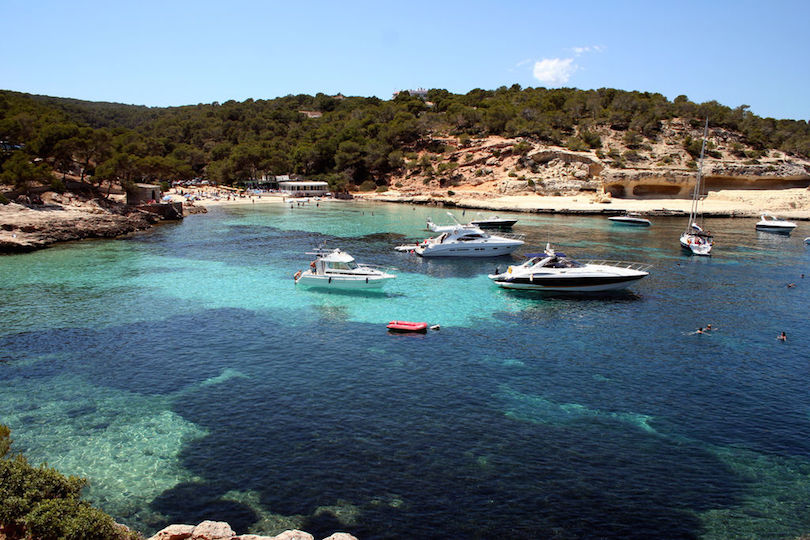
The largest of Spain’s Balearic Islands, Mallorca is surrounded by the sparkling waters of the Mediterranean, with jagged cliffs, secluded coves, and beautiful beaches lining its shores. Long a popular tourist destination, the island is blessed with a warm and welcoming climate and plenty of incredible scenery.
While its mountainous interior is home to ancient hilltop monasteries and sleepy villages, its spectacular coastline is dotted with seaside towns and resorts. Sunbathing, swimming and watersports are all popular pastimes, with delicious local cuisine and seafood on offer wherever you go.
The island’s main city and capital is Palma de Mallorca. There is a beautiful old town for visitors to explore, with winding narrow streets and centuries-old buildings beneath its exquisite Gothic cathedral. The pretty town of Soller is also worth visiting for its scenic, secluded setting, as is the charming mountain village of Valldemossa.
4. Madrid
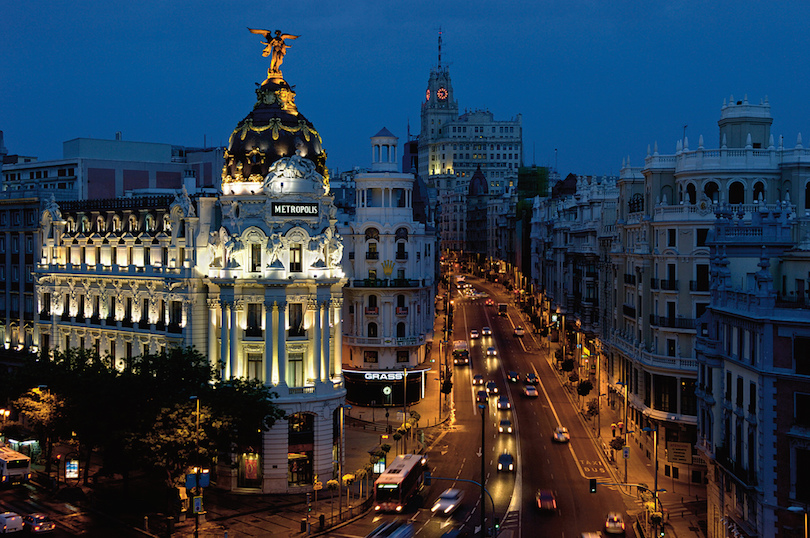
Spain’s capital and largest city, Madrid, is widely known for its sizzling nightlife scene. Home to a number of universities, the city constitutes a diversity of ethnic groups, making it one of Europe’s most colorful cosmopolitan cities.
Madrid is a beautiful city mixed with old and new architecture. The capital is comprised of several neighborhoods offering their own unique character and attractions ranging from historic quarters to older crowd communities, university areas, multicultural districts and party scenes.
The heart of the city is Puerta del Sol, a large plaza serving as the scene of festivals, important gatherings and street performers as well as a hub for the public transportation network. Another important square is Plaza Mayor, known for its many souvenir shops, cafes and the lively San Miguel Market.
Located within the city center are most of Madrid’s most popular tourist attractions such as the Royal Palace, the residence of Spain’s monarch, and a plethora of glorious churches and historic landmarks. Madrid offers many things to see and do from beautiful parks and zoos to football matches, museums, art galleries and concerts.
5. Seville
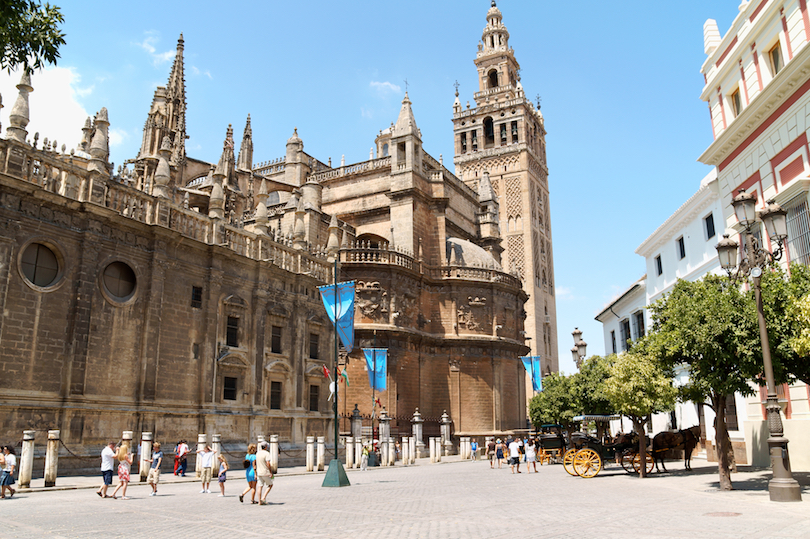
Exceptional tourist attractions, lively festivals and buzzing nightlife all make Seville the top destination in Southern Spain. As the capital city of Andalusia, Seville is also the region’s financial and cultural capital.
Seville is home to many beautiful and important historic landmarks, chief of which is the grand Cathedral of Seville, where it is believed that Christopher Columbus is buried. Other significant buildings include the Real Alcazar, an extravagant Moorish palace with luxurious gardens and a room where Christopher Columbus’s voyage to the New World was planned.
The city is also home to the largest wooden structure in the world, the Metropol Parasol, a giant umbrella-shaped structure housing the main market.
As the region’s cultural capital, Seville offers numerous museums, art galleries and entertainment venues. When the sun goes down, Seville’s nightlife scene lights up with its many bars, nightclubs and flamenco dance halls.
Every year, Seville hosts its April Fair, one of Spain’s most celebrated events, where the city’s streets turn into one giant party involving centuries-old customs, traditional costumes, flamenco dancing, bullfights and plenty of local food and drink.
6. Valencia
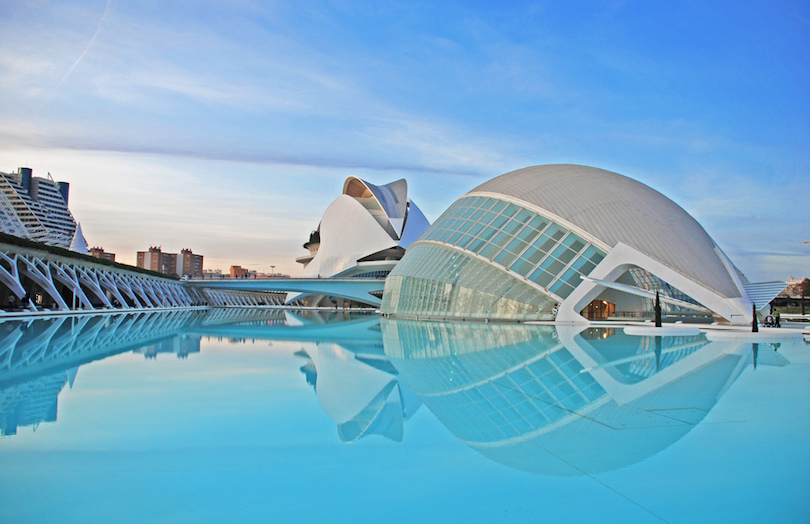
One of the largest and most important cities in Spain, Valencia is located in the eastern part of the country in the region of Valencia. After several years of major construction and renovation, Valencia today is famous for its Fallas Festival and the City of Arts and Sciences architectural masterpiece.
Valencia is stuffed with restored historic buildings that include stunning churches, old monasteries such as San Miguel de los Reyes and the site of an ancient silk trade center known today as the Silk Exchange Market.
After redirecting the Turia River, the city constructed its most impressive attraction, a massive cultural and entertainment complex known as the City of Arts and Science. Contained within this complex are several buildings such as a science museum, planetarium, aquarium, arts museum and an IMAX theater that are each artistic marvels in and of themselves. Also included in the old Turia riverbed are beautiful gardens, athletic parks and artificial lakes.
One of Valencia’s most popular neighborhoods is the Barri del Carme with its colorful mix of architecture, diverse ethnic groups, trendy shops and outdoor cafes.
Every March, Valencia hosts the Fallas Festival where each neighborhood displays papier-mâché figures of all sizes and colors for a whole week. At the end of the week, the “fallas” are ceremoniously burned, and the communities party into the night. However, March isn’t the only time to party in Valencia. Every night, the city vibrates with lively bars and nightclubs in every neighborhood.
7. San Sebastian
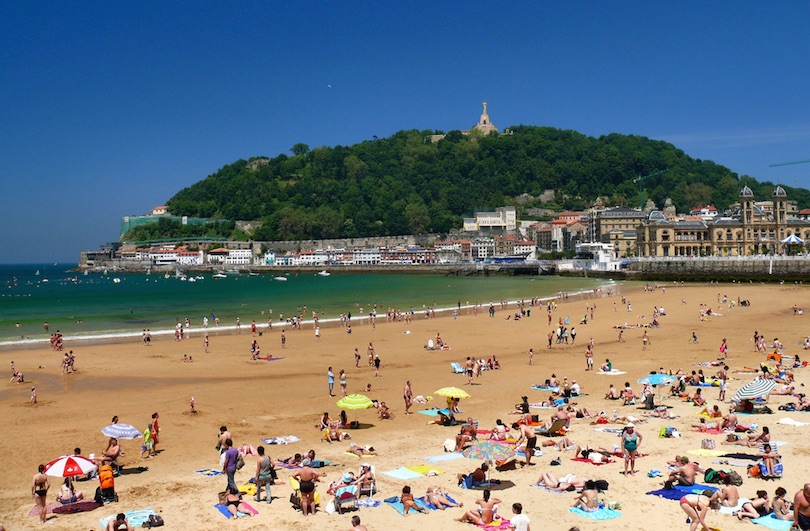
San Sebastian is the capital of the Gipuzko province, located in the Basque country of North Spain off the coast of the Bay of Biscay. This beautiful seaside city is well-loved for its excellent beaches and outstanding culinary tradition.
Although it is divided into several districts, San Sebastian is a small, cozy city crammed with restaurants, pintxo bars, designer shops and an enclosed mall. The Old Town features many historic buildings reconstructed in the 19th century after the city was nearly destroyed during the Napoleonic Wars.
San Sebastian boasts some of the best beaches in Europe with the most popular of these being Playa de la Concha, which offers sunbathing and water activities like swimming, kayaking and water skiing. Playa de la Zurriola attracts many surfers and provides surf board and body board rentals.
Overlooking the city are two lofty hills, Monte Urgell and Mount Igueldo, which offer hiking, funicular rides, amusement parks, remarkable statues and fantastic views.
San Sebastian is widely appreciated in Spain for its pintxos. Pintxos are appetizers, which are prepared in a wide variety of fresh vegetables, meats and seafood. Many of the bars in the city feature buffets displaying a range of these pintxos. The local tradition is to go from one bar to the next, sampling one or two pintxos with a drink of wine or beer.
A number of festivals and events take place in the city throughout the year. Drawing the most crowds are the San Sebastian Film Festival and the Jazz Festival.
8. Cordoba
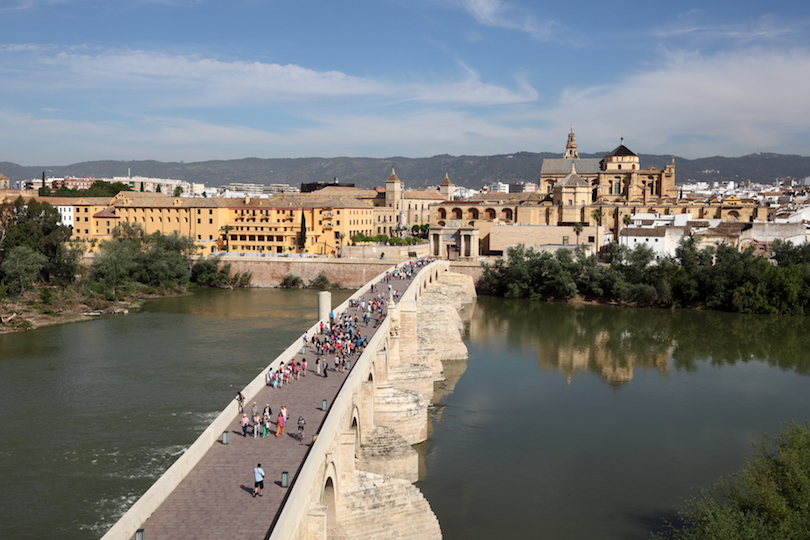
Cordoba is the capital of the province of the same name in the Andalusian region of southern Spain. While Cordoba is characterized by its small town charm, this mid-size city offers all the historic and cultural attractions of a bustling metropolis.
One of the oldest towns in Europe, the historic quarter of Cordoba is a maze of tiny medieval streets, plazas and whitewashed courtyards all situated around the star attraction, the Mezquita. Initially built as a mosque, the Mezquita is now a glorious cathedral retaining most of its original architecture. Its forest of columns topped with Islamic-style red and white striped arches serves as a reminder of the glory and importance Córdoba held in medieval times. Outside the Mezquita is a beautiful orange grove perfect for relaxing.
Other places of interest include the Fortress of the Christian Monarchs, the Street of Flowers, and the Old Jewish Quarter with its charming patios and souvenir shops. Once a Roman city, Cordoba also features many Roman structures including its old walls, gates, bridge, an amphitheater and mausoleum.
Throughout the city are various plazas offering a range of museums, theaters, restaurants, cafes and bars. Plaza de las Tendillas is the main square with a vibrant shopping scene while the Plaza del Port is associated with Cervantes’s Don Quixote.
Cordoba is buzzing in the month of May with three lively festivals that include the May Crosses Festival, the Patios Festival and the Codoba Fair. During these events, the city’s plazas and courtyards are all decorated while various contests, flamenco dancing, traditional food and drink all fill the streets.
9. Ibiza
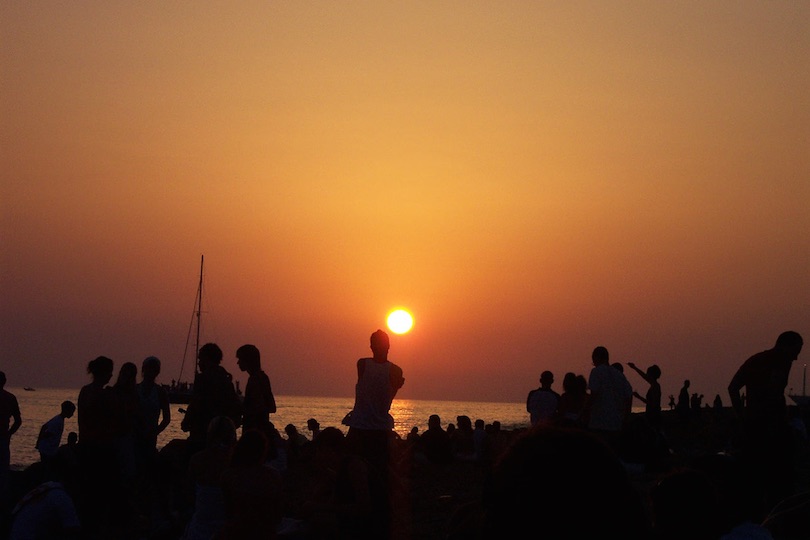
The third largest of the Balearic Islands, Ibiza is located off the east coast of Spain, surrounded by the sparkling waters of the Mediterranean. While it is famous for its pounding nightlife and summer club scene which attract world-renowned DJs to its shores, the island actually has many other different sides.
Quite rocky and rugged, Ibiza is lined by beautiful bays and beaches; this, coupled with its warm, sunny and dry climate, makes it a great beach holiday destination. The largest city on the island, Ibiza Town boasts a majestic walled old town perched atop of a hill overlooking the sea.
While you can certainly find relaxing rural retreats and sleepy, seaside villages on the island, many people visit Ibiza for its incredible party scene and exhilarating electronic dance sets. In summer, its heaving clubs stay open through the night until dawn, when the sun finally rises over the sea.
10. Santiago de Compostela
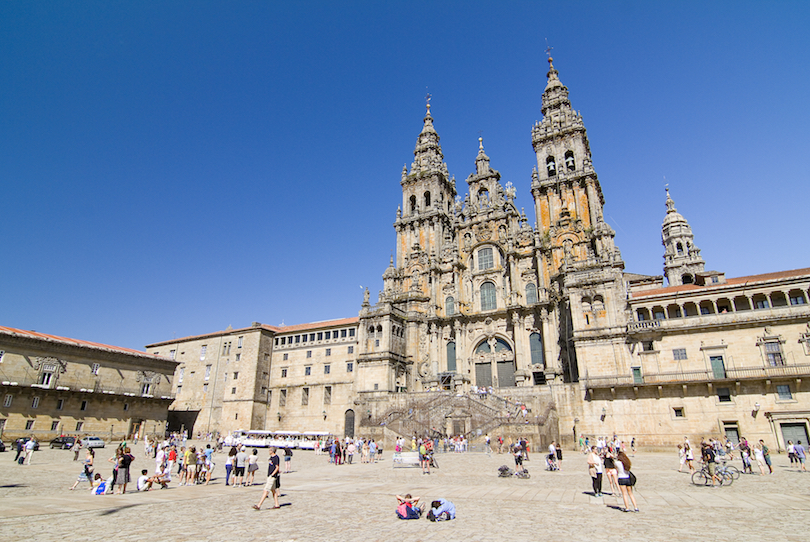
The capital city of the Galicia region in northwestern Spain, Santiago de Compostela is famous as the final destination of the traditional pilgrimage known as Camino de Santiago. Also called the Way of St. James, this pilgrimage dates back to Medieval times and is important to many because it is believed that Santiago de Compostela is where St. James, an Apostle of Jesus Christ, is buried. Today, the city attracts thousands of visitors every year for both its religious tradition and history.
The arriving point for most pilgrims is the main square, Praza do Obradoiro. Situated in the heart of the city, this bustling plaza is the scene of many important landmarks, particularly the Santiago Cathedral where the tomb of St. James is located. Other historic buildings here are GelmÌrez Palace, Rajoy Palace, Catholic Kings Hostal and San Jeronimo College.
The Pilgrimage Museum is a good place to learn all about the history and significance of the Camino de Santiago pilgrimage while the Museum of the Galician People showcases the culture and history of the region.
11. Ronda
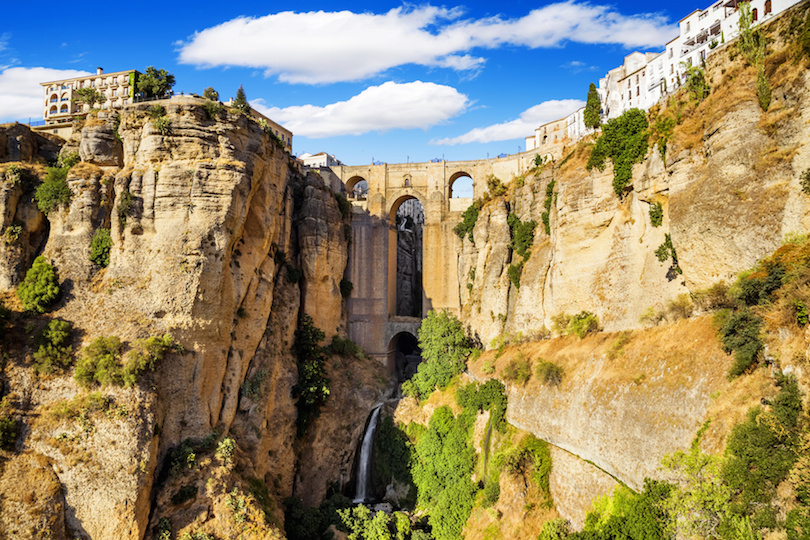
Located in one of the most spectacular settings imaginable, Ronda, in the south of Spain, straddles the steep El Tajo gorge, overlooking the valleys and hills that lie before it.
Spanning the breadth of the gorge is Puente Nuevo, the city’s main landmark built in 1793. The impressive bridge connects the more modern El Mercadillo part of town with El Ciudad, the old Moorish quarter, which is home to marvellous churches, elegant palaces and pretty gardens. The town is considered to be the cradle of modern Spanish bullfighting; its neoclassical ring is the oldest such building in the country.
Due to its rich cultural heritage and history as well as its dramatic clifftop setting, Ronda has long drawn writers and poets alike to its ancient streets. While Ernest Hemingway, James Joyce and Rainer Maria Rilke all visited at one time or another, Ronda now attracts lots of tourists and is one of the most popular and picturesque towns to visit in Andalusia.
12. Segovia
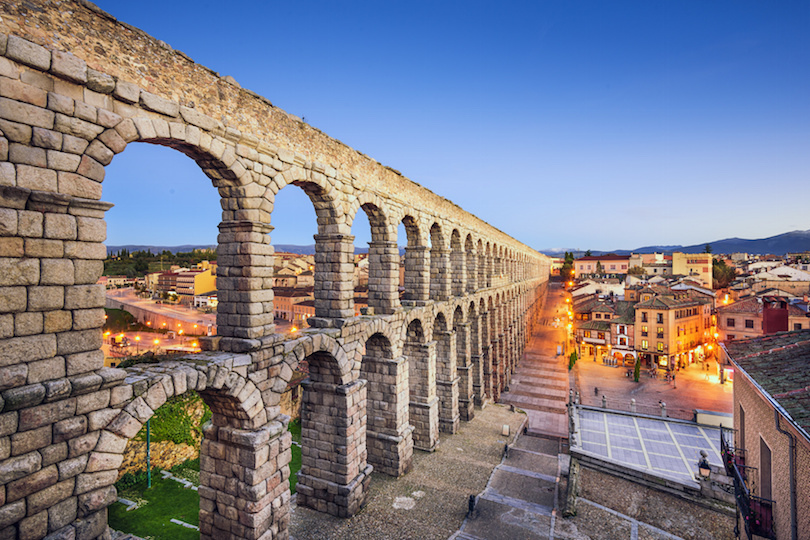
The capital and largest city of the province of the same name, Segovia is set in a scenic spot with the Sierra de Guadarrama mountains rising in the distance. Its sun-kissed streets straddle the Eresma River on Spain’s Inner Plateau with Valladolid and Madrid lying not far away.
Segovia is famed for its historical sights. Within its walled Old Town you can find the Aqueduct of Segovia, which was built around 100 AD by the Romans. While this engineering marvel acts as the city’s symbol, other astonishing sights, such as a grand and gorgeous Gothic cathedral and numerous churches, convents and monasteries, can be found nearby.
The other main attraction is the elegant Alcazar of Segovia, set atop a rocky outcrop overlooking the city. Said to have inspired Walt Disney’s Sleeping Beauty Castle, the medieval castle and palace features lots of fine architecture and was once one of the favourite royal residences of the Kings of Castille.
13. Merida
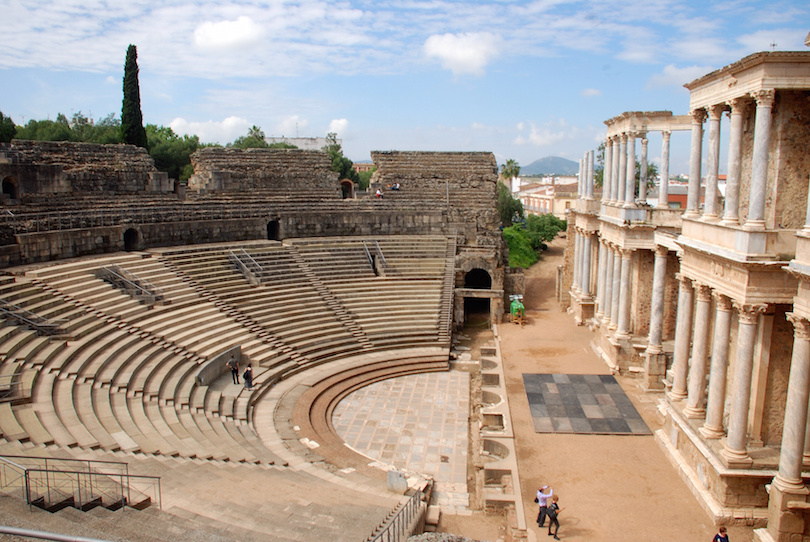
Founded back in 25 AD by the Romans, Merida boasts some of the most impressive, extensive, and well-preserved ruins in the whole of Spain. Now the capital of the autonomous community of Extremadura, the city lies in the western-central part of the Iberian Peninsula, with the Guadiana and Albarregas rivers running through it.
As it boasts almost two thousand years of history, ancient historical sights and archaeological ruins are found wherever you go. Of these, the magnificent old Roman Theatre is a must visit; it still holds flamenco shows and theater performances to this day.